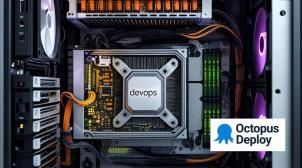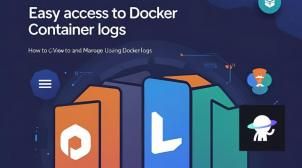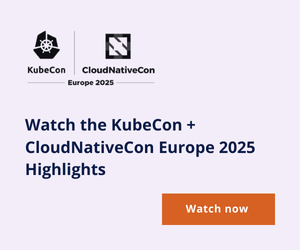-
AI Gateways: The Missing Piece in Scalable & Responsible AI Inferencing
As AI adoption scales, traditional gateways fall short of meeting enterprise demands for performance and governance. This article explores how AI gateways enhanced with semantic caching and content guard are reshaping the infrastructure for responsible and scalable AI deployment. From cutting inference costs to enforcing compliance across data center and edge environments, discover how a code-first approach to managing these intelligent gateways enables consistent, high-performance, and secure AI delivery across any architecture.
-
7 Critical API Protection Strategies to Fortify Your API Security
As APIs power more of today’s digital services, they’ve become prime targets for attackers. Shocking data shows over 50% of APIs use no encryption or authentication, leaving businesses wide open to breaches. This article outlines seven critical strategies—from enforcing encryption and strong authentication to blocking zombie APIs and centralizing key management—that form a robust, multilayered defense. Learn how to reduce your attack surface, secure sensitive data, and protect API-driven systems from modern threats.
-
Troubleshooting Kubernetes with AI: Using the K8s MCP server
Unlock AI-powered Kubernetes troubleshooting! Discover the Model Context Protocol (MCP) and how it standardizes AI agent interactions with Kubernetes tools like kubectl, Helm, and ArgoCD. Learn how to integrate K8s MCP Server with agentic frameworks like PydanticAI for seamless, context-rich cluster management.
-
DevOps and Platform Engineering
DevOps brought developers and operations together to improve software delivery speed and reliability. Now, Platform Engineering builds on that foundation—enabling development teams with self-service tools, golden pathways, and smoother workflows. This article explores how Platform Engineering complements DevOps, supports scale without sacrificing autonomy, and helps high-performing teams reduce complexity while boosting productivity.
-
Adaptive alerting: faster, better insights with the new metrics forecasting UI in Grafana Cloud
Ditch reactive alerting! Discover how Grafana Cloud's new metrics forecasting UI enables proactive, adaptive alerting, letting you fine-tune models in real-time, anticipate problems before they strike, and automatically account for seasonality and holidays—all now available for free!
-
Prometheus data source update: Redefining our big tent philosophy
Grafana is redefining its "big tent" philosophy! Discover how purpose-built data sources, like the new plugins for Amazon Managed Service for Prometheus and Azure Monitor Managed Service for Prometheus, enhance interoperability and cater to specific cloud use cases, empowering users to centralize observability without sacrificing vendor neutrality or functionality.
-
Docker Container Logs: How to View & Manage
Easy access to Docker container logs is essential for effective development and debugging. This guide explores how to view and manage Docker logs using the docker logs command, Docker Compose, and Docker Desktop. It also covers where logs are stored, how to clear them, and best practices for centralized logging, log rotation, and structured output. Whether you're just starting with Docker or optimizing a production setup, this article will help you tailor container observability to your needs.
-
Achieving Sovereign AI with the JFrog Platform and NVIDIA Enterprise AI Factory
Unlock Sovereign AI! Discover how the powerful collaboration between JFrog and NVIDIA delivers secure, scalable, and compliant AI. Learn how they enable enterprises to build, manage, and deploy AI models from development to edge, ensuring full control over data, models, and infrastructure.
-
How JFrog Delivers Self-Service Cloud Environments for our Developers
Increasing operational efficiency, automation, and scalability are critical for success In today’s cloud-native development environments
-
Runtime is the real defense, not just posture
Traditional cloud security tools focus on static scans and misconfiguration checks, but they can’t keep up with today’s fast-moving threats. This article explores why runtime security — real-time monitoring and automated response — is essential for protecting dynamic cloud-native environments. Learn how shifting to a runtime-first strategy enables faster detection, proactive defense, and true resilience in the cloud.
-
Top 15 Kubectl plugins for security engineers in 2025
Kubernetes security is evolving fast—and so should your tools. This roundup of the top kubectl plugins for 2025 spotlights essential extensions that help security teams audit RBAC, trace runtime activity, manage secrets securely, and respond to threats in real time. Whether you're managing complex clusters or chasing compliance, these plugins supercharge your command line with the visibility and control you need.
-
Practical AI security in multi-cloud environments
As organizations rapidly adopt generative and agentic AI tools across multi-cloud environments, securing those systems has never been more critical. This article explores the key challenges of AI security—such as visibility gaps, runtime threats, and compliance pressures—and outlines best practices for building a strong AI security posture. From continuous monitoring with Falco to managing AI-specific risks with frameworks like MITRE ATLAS and OWASP AI, learn how to protect your AI infrastructure against evolving threats and regulatory demands.
Filter & Sort



















